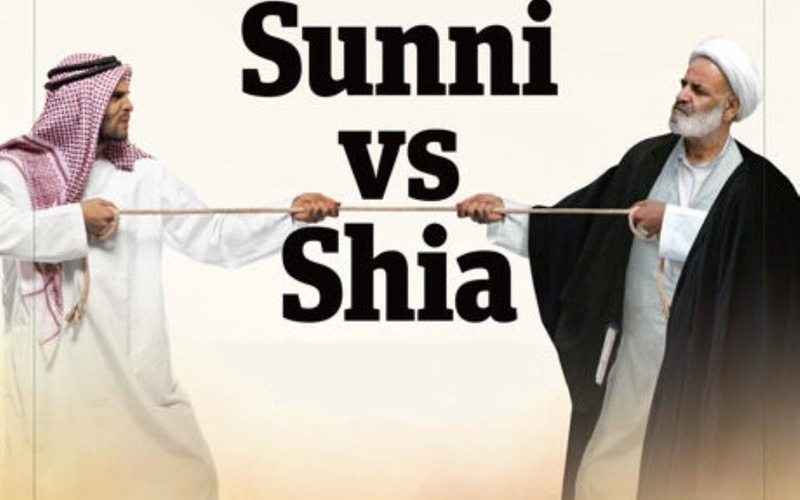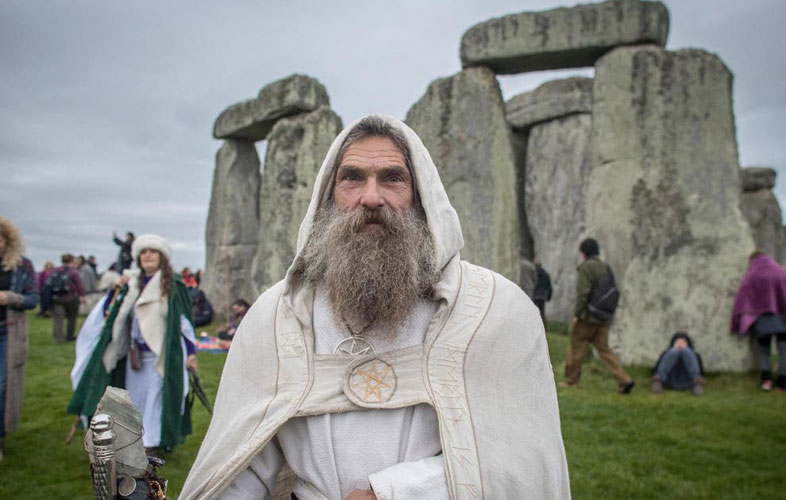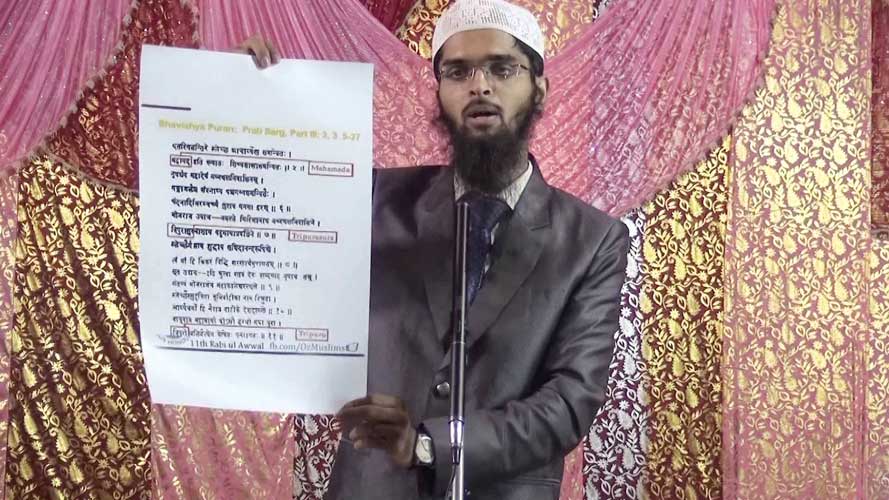What’s the Difference Between Sunni and Shia Muslims?
Sunni vs Shia:
The historicists came to be known as Sunnis and their primary opponents as Shīʿites. These labels are somewhat misleading because they imply that only the Sunnis tried to follow the Sunnah of Muhammad. Sunni vs Shia Each group relied on the Sunnah but emphasized different elements. For the Sunnis, who should more properly be called the Jamāʿī-Sunnis, the principle of solidarity was essential to the Sunnah. The Shīʿites argued that the fundamental element of the Sunnah, and one willfully overlooked by the Jamāʿī-Sunnis, was Muhammad’s devotion to his family and his wish that they succeed him through ʿAlī. These new labels expressed and consolidated the social reorganization that had been underway since the beginning of the conquests. The vast majority of Muslims now became consensus-oriented, while a small minority became oppositional. The inherent inimitability of Muhammad’s role had made it impossible for any form of successors hip to capture universal approval.
When the ʿAbbāsids denied the special claims of the family of ʿAlī, they prompted the Shīʿites to define themselves as a permanent opposition to the status quo. The crystallization of Shīʿism into a movement of protest received its greatest impetus during and just after the lifetime of one of the most influential Shīʿite leaders of the early ʿAbbāsid period, Jaʿfar al-Ṣādiq (died 765). Jaʿfar’s vision and leadership allowed the Shīʿites to understand their chaotic history as a meaningful series of efforts by truly pious and suffering Muslims to right the wrongs of the majority.
The leaders of the minority had occupied the office of the imam, the central Shīʿite institution, which had been passed on from the first imam, ʿAlī, by designation down to Jaʿfar, the sixth. To protect his followers from increasing Sunni hostility to the views of radical Shīʿites, known as the ghulāt (“extremists”), who claimed prophethood for ʿAlī, Jaʿfar made a distinction that both protected the uniqueness of prophethood and established the superiority of the role of the imam. Since prophethood had ended, its true intent would die without the imams, whose protection from error allowed them to carry out their indispensable task.
Although Jaʿfar did develop an ideology that invited Sunni toleration, he did not unify all Shīʿites. Differences continued to be expressed through loyalty to various of his relatives. During Jaʿfar’s lifetime, his uncle Zayd revolted in Kūfah (740), founding the branch of Shīʿism known as the Zaydiyyah (Zaydis), or Fivers (for their allegiance to the fifth Imam), who became particularly important in southern Arabia. Any pious follower of ʿAlī could become their imam, and any imam could be deposed if he behaved unacceptably.
The Shīʿite majority followed Jaʿfar’s son Mūsā al-Kāẓim and imams in his line through the 12th, who disappeared in 873. Those loyal to the 12 imams became known as the Imāmīs or Ithnā ʿAshariyyah (Twelvers). They adopted a quietistic stance toward the status quo government of the ʿAbbāsids and prepared to wait until the 12th imam should return as the messiah to avenge injustices against Shīʿites and to restore justice before the Last Judgment. Some of Jaʿfar’s followers, however, remained loyal to Ismāʿīl, Jaʿfar’s eldest son who predeceased his father after being designated. These became the Ismāʿīliyyah (Ismāʿīlīs) or Sabʿiyyah (Seveners), and they soon became a source of the continuing revolution in the name of Ismāʿīl’s son Muḥammad al-Tamm, who was believed to have disappeared. Challenges to the ʿAbbāsids were not long in coming; of particular significance was the establishment in 789 of the first independent Shīʿite dynasty, in present-day Morocco, by Idrīs ibn ʿAbd Allāh ibn Ḥasan II, who had fled after participating in an unsuccessful uprising near Mecca. Furthermore, Kharijite rebellions continued to occur regularly.

Sunni vs Shia Doctrinal Differences:
Of the Sunni and Twelver Shiite differences, some of the most important relates to the issue of the Imamate; the question of intercession between Allah and human beings; matters not delineated by the Koran; the means of attaining paradise; and the role of present-day Imams, or religious leaders.
1. The Concept of the Imamate
In the Shiite view, the twelve Imams inherited their positions as the exclusive leaders of the Muslims through the authority of the Prophet Muhammad and divine ordination. They are considered to have been not only Muhammad’s temporal successors but also the inheritors of the prerogatives of closeness to Allah, and the interpreters of the Koran.
According to Shiism, the “Imam” has three functions: to rule over the Islamic community, to explain the religious sciences and law, and to be a spiritual guide to lead human beings to an understanding of the inner meaning of things. Because of these functions, he cannot possibly be elected by a public assembly. As a spiritual guide, he receives his authority only from on “high.” Therefore, each Imam is appointed through the designation of the previous “Imam” by Divine Command.
The Imam is to be concerned with daily matters as well as the spiritual and unmanifested world. His functions are at once human and cosmic (Nasr 1978, 278). The “Twelve Imams” are mediators for mankind (Donaldson 1933, 343).
Sunni Muslims. The above beliefs of the “Twelvers,” which give legitimacy to the verbal and written comments of “The Twelve Imams,” are categorically rejected by the Sunnis, who do not consider the institution of hereditary “Imamate” as part of the Islamic faith. All the prophets of Allah recognized by Islam, such as Adam, Noah, Abraham, Moses, Christ, and Muhammad, are seen as having been divinely ordained to guide human beings to worship Allah and seek His mercy. However, even the progeny of prophets are considered to be denied the privilege of the closeness and the blessings of Allah if they fail to practice His commandments. A typical expression of this belief is the Koranic passage.
And remember that Abraham was tried by his Lord with certain commands he fulfilled. Allah said: I will make thee Imam to the Nations. Abraham pleaded: “And also Imams from my offspring!” Allah said, “But my promise is not within the reach of evil-doers (Koran 2:124).
The Sunni Muslims do not place any human being, including the Twelve Shiite Imams, on a level equal to or even close to the prophets. The Sunni view is that nowhere in the Koran is it mentioned that the twelve Shiite Imams are divinely ordained to lead Muslims after the death of Muhammad. Muslims should be guided by words such as those in Muhammad’s last “Hajj” sermon, known as the Sermon of the Mount, in which he addressed all of humanity:
I am leaving behind two things; as long as you cling to them, you will not go astray. One is the “Book of Allah,” and the other is my “tradition” (Zaheer 1985, 10).
2. Intercession between Allah and Human Beings
Sunni Muslims. The Sunni Muslims believe that no one can intercede between Allah and human beings.
Say: To God belongs exclusively [the right to grant] intercession. To Him belongs the dominion of the heavens and the earth. In the end, it is to Him that ye shall be brought back (Koran 39:44).
Shiite Muslims. According to Shiism, the Twelve Imams can intercede between mankind and Allah.
The Apostle of Allah said to Ali:
” You and your descendants are mediators for mankind as they [human beings] will not be able to know God except through your introduction” (Donaldson 1933, 343).
” Shi’i Muslims must know their Imam to be saved, and the Imams, as well as the Prophets, of course, can and do intercede for believers before God at the hour of judgment” (Nasr 1987, 261).
3.” Ijma”5 (consensus) guarantees the authority of the Koran and the traditions as records of divine revelation.
Sunni Muslims. Consensus and analogy can be applied by those scholars who are highly knowledgeable in the Koran, the traditions of the prophet, and Islamic law, and practice the faith in every facet of their lives.
Shiite Muslims. The sources of Muslim law in Shiism are somewhat similar to those in Sunni Islam, namely the Koran, Muhammad’s practices, consensus, and analogy. However, the determination of consensus is related to the views of the Imams, and more freedom is given to analogy than in Sunni Islam (Nasr 1978, 278).
4. Paradise and Hell on the Day of Judgment
Sunni Muslims. Sunni Muslims strongly believe that the redemption of human beings is dependent on faith in Allah, His prophets, acceptance of Muhammad as the final prophet, and belief in righteous deeds as explained in the Koran. The mercy of Allah will determine the redemption of all human beings. Even the prophet Muhammad is at the mercy of Allah.
I would, if I disobeyed my Lord, indeed have a fear of the penalty of a Mighty Day (Koran 39:13).
Many other verses in the Koran enumerate that the basis of paradise is the mercy of Allah and the righteous deeds of human beings according to the Koran and Hadith.
Shiite Muslims. Shiite Muslims are guaranteed paradise if they obey and follow Muhammad and the Twelve Imams. Ibn Babuwaihi, a Shiite scholar, quoted Ibn-i-Sadiq, the sixth Imam, in reference to Muhammad’s address to Ali.
That you present to God those who may enter Paradise, i.e., those who recognize you and those whom you recognize. – – – that you are the absolute mediator, for those who will go to Hell will only be those who do not recognize you and whom you do not recognize (Donaldson 1933, 343).
5. The Role and Status of Present-Day Imams
Sunni Muslims. For Sunnis, the “Twelve Imams” and the present-day Shiite Imams (e.g., “Ayatollahs,” or the “shadows of Allah”) are humans without any divine powers. They are considered righteous Muslims, and the Twelve Imams are particularly respected because of their relationship with Ali and his wife Fatima, the daughter of Muhammad. Sunnis believe that Ali and his two sons, Hassan and Hussain, were highly respected by the first three Caliphs and the companions of Muhammad. Any righteous and knowledgeable Sunni Muslim can serve as an Imam with the prime function of leading the prayers and interpreting the Koran and Hadith provided he is well versed in these subjects. Sunnis also consider it heretical to impute to human beings attributes of Divine nature such as infallibility and the knowledge of all temporal and cosmic matters.
Shiite Muslims. The highest-ranking present-day Imams (Ayatollahs) are believed to receive their guidance and spiritual enlightenment directly from the “Twelve Imams,” who stay in continuous contact with their followers on earth every day through contemporary spiritual leaders. The Ayatollahs thus play a vital mediatory role. Because of their spiritual role, Ayatollahs cannot be appointed by governments, but only by consensus of other Ayatollahs.
Differences in Religious Organization (Sunni vs Shia)
The differences between Sunni and Shiite Islam are more than theological and historical. They are embedded in the social and political structure of the Middle East. Sunnis and Shiites form distinct communities. Conversions from Shiism to Sunnism and vice versa are rare, and Sunnis and Shiites are expected to marry members of their community. The vital moments of life-marriage, birth, and death are commemorated within the framework of the rituals of the community. Members of each community learn about Islam within the traditions of their faith, and under the guidance of their faith’s religious teachers.
Despite these traditions, the political loyalties of Sunnis and Shiites are affected by their country of citizenship and nationality. In 1980, Iran, a Shiite country whose language and culture are Farsi (Persian), was invaded by Iraq, an Arab country with a Sunni leadership but a Shiite majority in the population. Despite Iranian appeals, most Iraqi Shiites remained loyal to Iraq, performing military service when required during the 1980-88 Iran-Iraq war.
Both Sunni and Shiite Islam are organized in ways that reflect their beliefs. Given the emphasis of mainstream Shiism on the role of the Imamate, it is not surprising that the Shiites have a more elaborate religious hierarchy than Sunni Muslims. Except in post-revolutionary Iran, the Shiite clergy has been more independent of the government than religious officials have been in Sunni Muslim countries. Shiite religious officials have had less need to rely on secular governments for money to finance their activities since they control substantial religious endowments.
In the Shiite communities, the most important appointments to senior religious positions are made by Shiite religious officials, not by the state. In Sunni countries, in contrast, it is typical for governments to exercise control over the appointment of senior religious officials. These governments have also assumed the right to allocate large religious endowments through government ministries created for that purpose. This makes high-ranking Sunni clergy more dependent on the government than their Shiite counterparts. Sunnis are also more open than Shiites to the idea that the leading of prayers and preaching can be done by laypersons without formal clerical training.
Because of the power of the Shiite clergy, it is not surprising that they play an important political role. Led by Ayatollah Khomeini, the clergy organized the revolution that overthrew the Shah of Iran in 1978-79 and turned the country into the Islamic Republic. Shiite clergy has also been prominent in opposition movements in Iraq and Lebanon.
Islamic Political Movements:
Both Shiite and Sunni Muslim political movements have as a primary objective the establishment of Islamic law as the sole basis of government. They reject secularism as an imported western idea and are opposed to several kinds of social change that use the west as a model, such as changes in the status of women.
Political movements with a religious message have a popular appeal in many Muslim countries. This is partly because of the religious outlook of the people. But it is also because the leaders of these movements are addressing the political issues of the day.
One of the reasons for the fall of the Shah of Iran was that his secularizing policies alienated the religious establishment. In contrast, the monarchs of oil-rich Sunni Muslim countries have made a greater effort to keep their policies in line with religious sensitivities.
Another very important reason for the fall of the Shah was the widespread discontent with his development policies favoring rich and westernized groups. The Shah spent a great deal of the country’s oil wealth on military and civilian projects thought by many to be poorly conceived. Iran was a more populous country than other oil-rich Middle Eastern states, so its oil wealth spread less widely among the people. The effect of the Shah’s westernizing development policies was to produce a new bourgeois class that was a target of hatred and resentment for poor people. In addition, like nationalist and leftist Iranian parties, the clergy vehemently attacked the Shah’s ties to the West.
Despite their religious orientation, many of the issues addressed by the Islamic movements are the same political or social issues that concern secular politicians. The movements attack government corruption and the gulf between rich and poor. In Iraq and Lebanon, where Shiite communities are poorer than the Sunni and Christian communities, resentment at perceived discrimination has also allowed Shiite movements to mobilize grassroots support. Problems of corruption and poverty are also invoked by Sunni movements in countries such as Egypt and Algeria, though these movements have so far not been able to obtain support from high-level religious leaders of a stature comparable to Ayatollah Khomeini before the Iranian revolution.
The opposition to the West is derived from historic resentment in many parts of the Muslim world at western colonialism earlier this century. In addition to problems arising from that period, several more recent American and western policies are often cited by Muslim movements: western attempts to incorporate Muslim countries in alliances against the Soviet Union during the Cold War; political interventions such as the CIA-backed coup d’etat of 1953 that restored the Shah after a nationalist government led by Mohammed Mossadegh had taken power in Iran; western military and political support for Israel against the Arab world; and western military and political support for unrepresentative governments.
Some of the most dramatic anti-western acts have been carried out by Shiite political groups in Lebanon, where the central government collapsed following the outbreak of civil war in 1975. The fighting led to foreign intervention by Syrian, Israeli, and American forces. Radical Shiite movements such as the Hizballah (“Party of God”) flourished in the period following the dramatic western military intervention in Lebanon in 1982 when Israeli troops expelled the PLO from Beirut, and American peace-keeping forces were sent to Lebanon (to be withdrawn in 1984). Militant Shiites taking advantage of the lack of a central authority in the country attacked western and Israeli targets and took hostages, some of whom were killed. Sunni opposition movements in Egypt and Algeria have also recently been increasingly violent in their anti-government, anti-western tactics.
These tactics have caused a major debate in the Islamic world. There is no justification in Islamic scriptures and jurisprudence for indiscriminate killings or assassinations of local or foreign citizens by either Sunni or Shiite Muslims. Many intellectuals, however, cite the shortcomings of governments as a reason for these acts. “These bomb-throwers and wild men,” writes the well-known Egyptian journalist Muhammad Hassanein Haykal, “are the result of almost unimaginably corrupt and mediocre governments” (New York Times Magazine, November 21, 1993, 65).
Violent anti-civilian acts are not Islamic in origin. Radical violence seems to be a worldwide phenomenon. Radical groups, whether religious or not, often flourish in non-democratic environments where injustice, repression, and inappropriate foreign influence are widely believed to be dominant characteristics of the existing order.
General Information about Sunni vs Shia
1. The majority of the Iraqi population consists of Arab Shiites, but Sunni Arabs form a large minority group in the country.
2. “Majlis” is the Arabic word for assembly, and “Shura” means counsel or advice. “Majlis-al-Shura” thus designates the body of Muslims selected for consultation on all matters in Islam.
3. “Imamate” is the Arabic noun form of Imam, which means “he who stands before.”
4. “Ithna ‘Ashariyya” is the Arabic name for the branch of Shiism that believes in twelve Imams beginning with Ali and ending with Muhammad Al-Mahdi.
Their names are
a. Ali bin Abi Talib
b. Al-Hassan bin Ali
c. Al-Hussain bin Ali
d. Ali bin al-Hussain
e. Muhammad al-Bakir
f. Jafar-al-Sadik
g. Musa al-Kazim
h. Ali al-Riza
i. Muhammad Jawad al-Taki
j. Ali al-Naki
k. Al-Hassan al-Askari
l. Muhammad al-Mahdi
5. “Ijma” is an Arabic word for the consensus of Muslim opinion, and is applied to matters not covered by the Koran and Hadith. According to the well-known jurist, Al-Shaf’i, Ijma is the third source of Islamic jurisprudence.
World Religions
Read also:
Shiite Islam | Meaning, Definition, Emergence, Beliefs and More
Sunni Islam | Meaning, Definition, And Doctrines of the Sunnah and their spread
Word Of Faith Church | History, Founder, Beliefs, Criticisms
Vedic Religion | Beliefs, Mythology, Ritual and More..
Vedanta | Meaning, Teachings, Philosophy And Vedanta Academy



